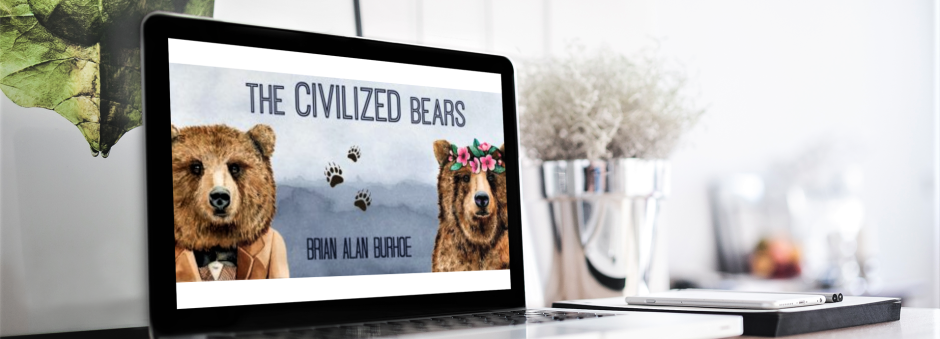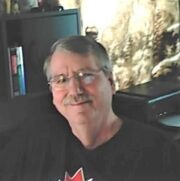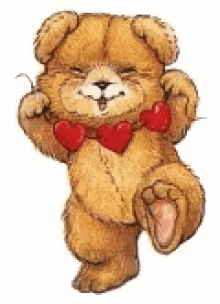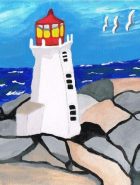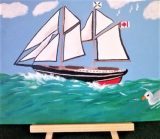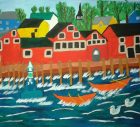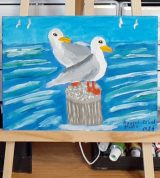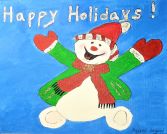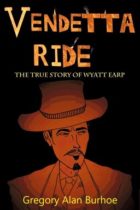The writing process and great how-to books.
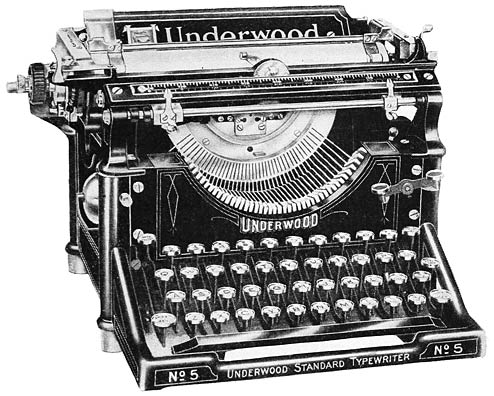
THE WRITING PROCESS: 5 Top Books About Creative Writing
I learned to read in newspaper comic strips. Mickey Mouse. Dennis the Menace. Tarzan of the Apes. Loved the bright, colourful characters. And the storytellers.
Early in the game, I knew I wanted to be such a storyteller. My own writing process was under way.
Ever curious, I’ve written articles about the Food Service, Northern culture, Church history & Spiritual literature, imaginative fiction, wilderness preservation, animal rescue, service dogs for our Veterans and more.
And I have written of wild animals and Canadian Mounties and winged Humans. I’ve had fiction translated into German & Russian…
Creative Writing has been my Life’s Idée Fixe. I throw myself into my writing. Read about Creative People. Even read writers on writing. Have you read Stephen King’s ON WRITING? A personal fave.
Here, from author Mike Consol, is a Guest Blog on that very subject. Listen!
“3 Secrets to Great Writing, 5 Books that Get You There”
To be a strong writer there are three things one must do.
- Write every day and with great avidity.
- Read great writing of all kinds.
- Read great books about writing.
This blog post is about the last, the third. Here we will review five of the best writing books on the market. Let them inspire you and bring forth the creativity you sense is latent within you and seemingly inaccessible…
Books about how to write are legion. Largely because there are so many people interested in writing and hungry for material about the craft. But good books about writing are few and far between. I’ve read a ton of them. But only a few have passed muster. So let’s review a selection of the writing books I’d recommend for both aspiring and accomplished writers.
Before I begin, let’s view this information through the proper prism. The purpose of reading books about writing is to keep oneself inspired and to refine the craft. To keep making us better at what we do. We are never too experienced to learn more. With that in mind, here’s my all-star lineup. Minus the very good but interminably mentioned ON WRITING WELL by William Zinsser and THE ELEMENTS OF STYLE by William Strunk and E.B. White.
Now, here are my Top 5 Books on the Writing Process – How to Write.
BIRD BY BIRD: Some Instructions on Writing and Life by Anne Lamott
Funny, practical and irreverent, Lamott hammers home a point that all writers grapple with. Your first draft is going to be junk (though she uses a more descriptive term), so just get over it. In fact, the best writers in the world write lousy first drafts. That is the writing process.
Once we accept that even Don DeLillo and Toni Morrison write lousy first drafts and we inevitably will do the same, the game changes quite dramatically. Just sit down and write and don’t sweat the outcome.
Create the raw materials. The editing and remanufacturing comes later. Lamott is filled with lots of good advice related to this core message. Check it out and watch your writing improve as you learn to concentrate on the process rather than the immediate output.
THE WAR OF ART: Break Through the Blocks and Win Your Inner Creative Battles by Steven Pressfield
(Not to be confused with the ART OF WAR, though obviously a play on that famous title). Pressfield’s book is about all artistic endeavors. Though writing is central to his message, if for no other reason than Pressfield is himself an accomplished novelist. With THE LEGEND OF BAGGER VANCE to his credit, among many other books.
“Resistance” is THE WAR OF ART’s villain. Every time we even think about doing something artistic Resistance rears it debilitating head in its many manifestations. It might be an unexpected wave of fatigue. Or a sudden realization that we have house work or yard work to do.
A telephone call we simply cannot put off any longer. Anything to avoid facing the blank page or music sheet. Given that, procrastination is the most common manifestation of Resistance. The dynamics of the writing process change once we recognize and acknowledge Resistance. We have more control over this metaphysical interloper. Then we can take a different approach.
As Pressfield puts it in the THE WAR OF ART:
“Most of us have two lives. The life we live and the unlived life within us. Between the two stands Resistance. Resistance will tell you anything to keep you from doing your work.”
Here’s how Pressfield describes his own writing process in THE WAR OF ART:
“I sit down and plunge in. When I start making typos, I know I’m getting tired. That’s four hours or so. I’ve hit the point of diminishing returns. I wrap for the day. How many pages have I produced? I don’t care. Are they any good? I don’t even think about it. All that matters is I’ve put in my time and hit it with all I’ve got. All that counts is that, for this day, for this session. I have overcome Resistance.”
One more point from Pressfield. He rightly points out that the difference between writers and wannabe writers is that writers understand that overcoming Resistance and sitting down to write is actually harder than the writing itself. The battle to begin is the biggest battle of all.
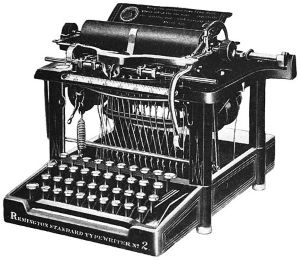
THE ARTIST’S WAY: A Spiritual Path to Higher Creativity by Julia Cameron.
A prolific writer herself and the author of numerous books on writing, Cameron teaches a technique called The Morning Pages that involves sitting down first thing each morning and write without stopping until you’ve filled three pages with content. Fill those pages with anything that comes to mind, regardless of how trivial or self-obsessed.
As Cameron says, you cannot do the Morning Pages wrong. Do this every morning and some magical things start happening. You might discover personal insights. You might have psychological breakthroughs. From a writing standpoint you will train yourself to set the internal editor aside. And simply write without regard to the quality of what you’re producing. Then, when you do your writing for publication, you’re more apt to let it flow. Without the tyranny of an internal editor casting aspersions on your ever word choice and sentence construction. Having opened the gates the subconscious mind – the fountainhead of creativity – can begin to assert itself.
IF YOU WANT TO WRITE: A Book about Art, Independence and Spirit by Brenda Ueland.
As the subtitle says, this is a book about art, independence and spirit. Ueland encourages us to be reckless when we write. Be a pirate, she says. Be a lion. We have that luxury because no real harm comes from writing regardless of how recklessly we produce it.
She starts several chapters by quoting the great poet William Blake. In one case using this searing Blake quote: “Sooner strangle an infant in its cradle than nurse unacted desires.” Clearly, Ueland was an adrenal writer, one who treated the writing process like a moth treats a flame.
In IF YOU WANT TO WRITE Ueland says: “I kept a slovenly, headlong, helter-skelter diary for many years. This is what it has done for me. It has shown me that writing is talking, thinking on paper. And the more impulsive and immediate the writing the closer it is to the thinking. Which it should be. It has made me like writing. For years it was the most boring, dreaded, and effortful thing to do — doubt-impeded, ego-inflated.”
Give the woman a cutlass and steed and everything about her writing changed. Attitude and perspective are everything when it comes to writing.
HOW TO WRITE A DAMN GOOD NOVEL: A Step-by-Step No Nonsense Guide to Dramatic Storytelling by James Frey.
Never mind that you have no desire to write a novel. Never mind that you never pen fiction. This book teaches good writing, period. Its principles are applicable to many types of writing because it teaches:
- Theme
- Character development
- The three rules of dramatic writing
- The ABC’s of storytelling
- Point of view
- The fine art of sensuous and dramatic prose
Frey’s instruction is lean, straightforward and practical. He accomplishes more in just 172 pages than most writing books accomplish in three times the space. He writes with force and economy.
CONCLUSION: THE WRITING PROCESS
There are many more terrific writing books, many of which I’m sure I’ve never come across. But these five are exceptional. Let them inspire you and bring forth the creativity you sense is latent within you and seemingly inaccessible.
THE WRITING PROCESS: 5 Top Books About Creative Writing
Thanks, Mike, for a masterful review of some of the best books on the Writing Process!
“Live Free, Mon Ami!” – Brian Alan Burhoe

Do You love Animal Stories?
Read this story of the Wolf who rescued a Husky!
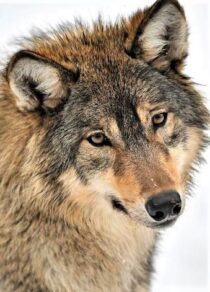 READ WOLFBLOOD — MY MOST POPULAR ANIMAL YARN: “I LOVE THE HAPPY ENDING!”
READ WOLFBLOOD — MY MOST POPULAR ANIMAL YARN: “I LOVE THE HAPPY ENDING!”
“I JUST READ WOLFBLOOD AGAIN FOR GOOD MEASURE. ONE FOR ANY WOLF LOVER. ENJOYED IT BUT WISH IT WAS A FULL LENGTH NOVEL.” – Gina Chronowicz @ginachron
“GREAT SHORT STORY! DOES REMIND ME OF CALL OF THE WILD, WHITE FANG…” – Evelyn @evelyn_m_k
An “entertaining and affectionate” narrative in the Jack London Tradition. Story of a lone Gray Wolf and his quest for a place in the far-flung forests of the feral North. WOLFBLOOD: A Wild Wolf, A Half-Wild Husky & A Wily Old Trapper
NOTES:
Mike Consol’s articles have appeared on ArticlesFactory. His most recent works include “Writing and speaking in a distinctive voice” and “Why writing is still the king of communication mediums.” Source: Free Guest Posting Articles from ArticlesFactory.com.
AI writing, best books, creative writing, creative writing exercises, informational writing, narrative writing, on writing, top books, types of writing, writing a book, writing process, writing prompts. What is creative writing?
